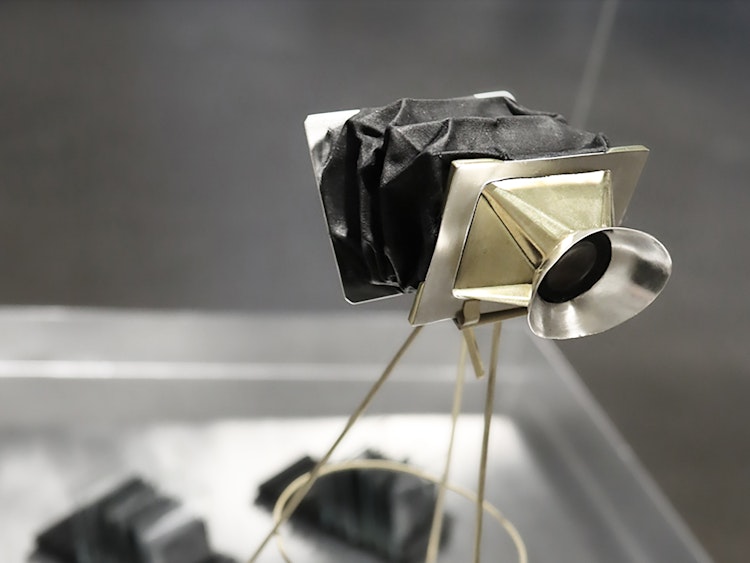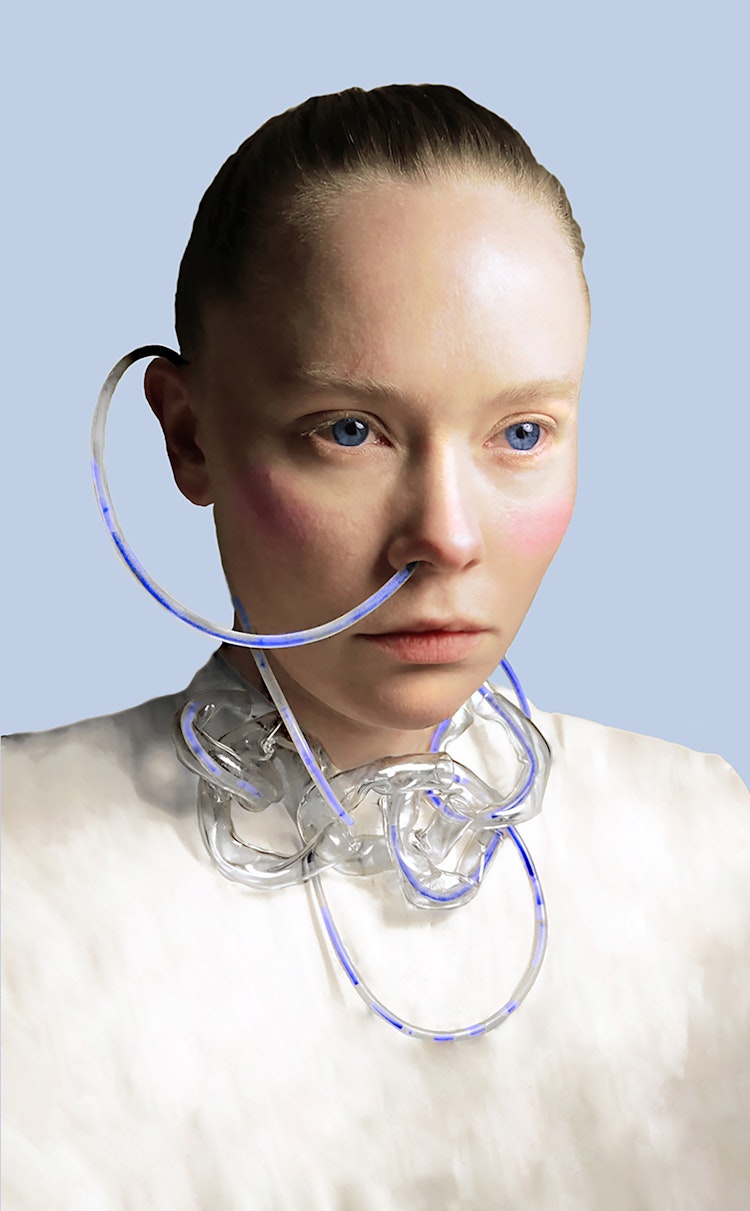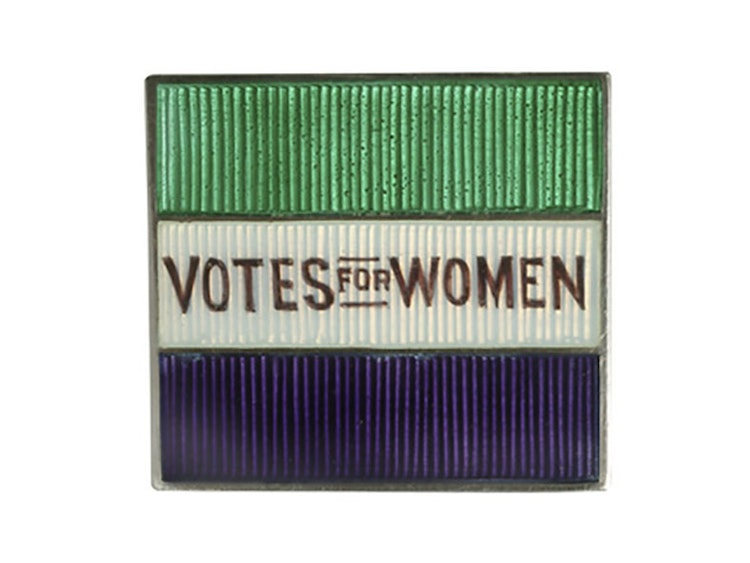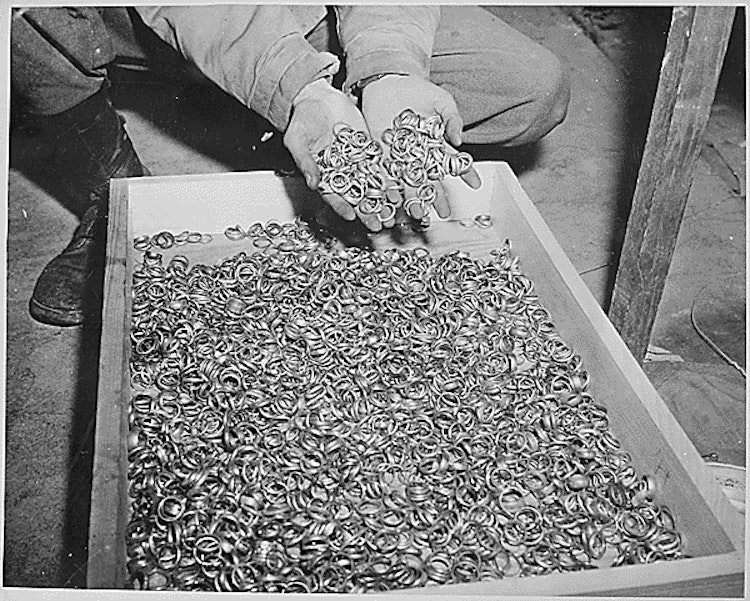

It is our pleasure to welcome you to the fifth issue of The Vessel entitled The Outermost Layer. Edited by artists, and educators Camilla Luihn and Agnieszka Knap, this issue offers a thought-provoking selection of texts that showcase the many possibilities and complexities of working with metal art and jewellery. We invite you to explore the power of adornment and the ways in which metal art and jewellery can serve as vessels for meaning, memory, and identity. Through the diverse perspectives and voices represented in this issue, we hope to ignite your curiosity and inspire you to explore the outermost layer.

The Outermost Layer, the fifth issue of The Vessel, explores various aspects of art jewellery and metal art through 9 interviews, essays, and articles edited by artists Camilla Luihn and Agnieszka Knap and published by Norwegian Crafts.
The issue challenges the presumed permanence of jewellery, and examines the significance of jewellery and metal art in relation to identity and the body, as well as the sociopolitical impact of wearable signs and adornment.
In The Outermost Layer your can read features interviews and articles by Olaf Hodne, Anne Klontz, Johanna Zanon, Linn Sigrid Bratland, Julia Wild, and Katharina Dettar, as well as Jokum Lind Jensen and Vivi Touloumidi, showcasing the works of artists including Kristine Ervik, Ingvild Reinton, Renate Dahl, Lauren Kalman, Sayo Ota, and Judit Fritz.

Jewellery Thoughts of Impermanence
In this text, Olaf Tønnesland Hodne questions the presupposed permanence of jewellery and introduces us to three artists – Sayo Ota, Íris Elva Ólafsdóttir and Kristine Ervik – whose practices embrace perishable materials, making art jewellery not made to last.

Linn Sigrid Bratland’s essay looks at surface work, a time-consuming and often tedious part of any craft process, which today is being revolutionised by emerging technologies and automatic processes. Bratland highlights the possibilities of these aids while emphasising the importance of safeguarding manual skills and tacit knowledge.


Spirals, Serendipity, and Symbiosis: Exploring the Working Processes of Metal Artists Ingvild Kristine Reinton, Miriam Johannesson, and Sofia Eriksson
Anne Klontz investigates the artistic practices of three artists whose work with metal demonstrates the ‘outermost layer’ as a site for transformation and negotiation.
Jokum Lind Jensen – Searching for the Essence of the Material
Blacksmith and artist Jokum Lind Jensen employs ancient techniques to create contemporary sculptures in mild steel. His sculptures showcase his search for the monumental in the minute, and his curiosity towards materiality and the many possibilities it holds.

In an interview with three artists, Johanna Zanon explores the theme of the relationship between the body and metal art and jewellery. Renate D. Dahl's work focuses on questioning the social norms and standards associated with the female form. Judit Fritz works at the intersection of crafts and sciences, experimenting with using sweat and tears to grow gemstones. Finally, Lauren Kalman uses craft-based materials in her performance-based videos, photographing and distorting the body in sometimes grotesque and violent ways, in order to explore attraction and repulsion.

The World-Shifting Qualities of Adornment
In this essay, Vivi Touloumidi discusses wearable signs and adornment, their ability to carry sociopolitical messages, and the impact they can have on forming subjects and identities. By researching the black triangle, a symbol used during WWII to oppress and categorise so-called “asocials”, Touloumidi found a way to investigate the world-shifting qualities of adornment, and the power of subverting symbols of oppression as badges of honour and protest.


With this Ring – An Essay Celebrating the Symbolic Meaning of Jewellery
In this text, Julia Wild and Katharina Dettar invite us to contemplate jewellery as a means of communication, directed both inward and outward. Taking the wedding ring as an example, Wild and Dettar investigate its significance in relation to identity, status, materiality, absence, and loss.